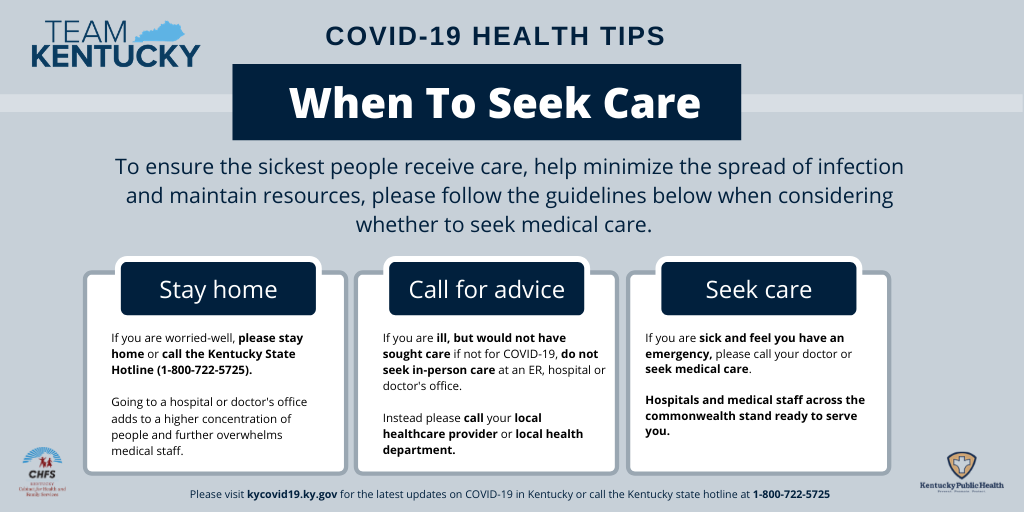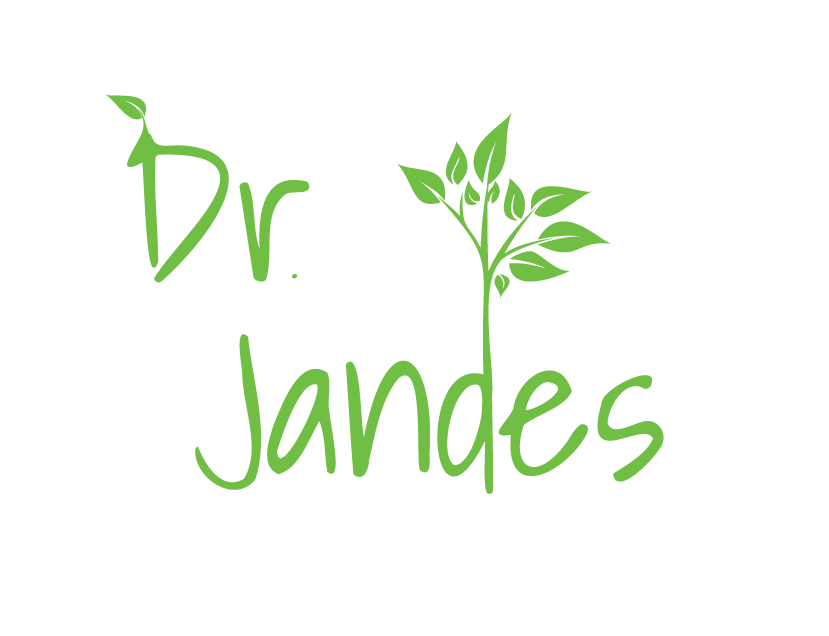Coronavirus
Wellness Recovery’s COVID-19 update.
.Last update: April 14, 11:11 AM
Click the link below to go directly to that part of the page:
What is Wellness Recovery doing to help the situation?
Wellness Recovery has cancelled all in-person visits until further notice. We understand that this will be an inconvenience to some of our patients, but we have converted to a 100% telemedicine-based practice during this time, including at-home drug testing. This will require the installation of our telemedicine platform VSEE Clinic:
 Install VSee Clinic on iOS
Install VSee Clinic on iOS
 Install VSee Clinic on Android
Install VSee Clinic on Android
We will also be calling in prescriptions to ensure that patients don’t run out of any essential medications during this difficult time. If you need immediate assistance or have questions about how your visit will be structured, please call our office at 606-618-0125. We are still accepting new patients as we know that active substance use disorder will only contribute to this public health crisis.
News & Resources
Watch Andy Beshear’s daily 5:00PM address here
Best place to get information for Kentucky residents
Great place to see rojections on success of stay at home orders by state
Epicurves that are graphed – generally consistent with other materials
Place to report symptoms for tracking purposes
What is COVID-19 coronavirus?
The 2019 Novel Coronavirus (COVID-19) is a new illness that was first identified in Wuhan, China, in December 2019, and has now spread across the globe with over 1 million infected and over 75,000 deaths. Patients usually report symptoms of cough and fatigue with only 50% of patients having a fever during the onset of symptoms.
What are the Symptoms of COVID-19?
Patients with confirmed COVID-19 infection have reportedly had mild to severe respiratory illness with symptoms of:
- Fever (only occurring in 50% of early infections)
- Cough
- Shortness of breath
The CDC believes at this time that symptoms of COVID-19 may appear in as few as 2 days or as long as 14 after exposure.
How is the virus transmitted?
Coronaviruses are a large family of viruses that are common in many different species of animals, including camels, cattle, cats, and bats. Rarely, animal coronaviruses can infect people and then spread between people such as with MERS and SARS. Many of the early COVID-19 patients in Wuhan, China had some link to a large seafood and live animal market, suggesting animal-to-person spread. However, person-to-person spread is now occurring. VERY IMPORTANT – SOME PEOPLE THAT CARRY THE VIRUS DON’T SHOW ANY SYMPTOMS OR SHOW SYMPTOMS INCONSISTENT WITH TRADITIONAL COVID-19 SYMPTOMS. THESE PEOPLE ARE HOW THE MAJORITY OF INFECTIONS ARE SPREADING. SOCIAL DISTANCING (I.E. STAYING HOME) IS THE ONLY WAY TO SLOW THE SPREAD OF THIS VIRUS.
Person-to-person spread is believed to occur via respiratory droplets produced when an infected person coughs or sneezes. These droplets can land in the mouths or noses of people who are nearby, or possibly be inhaled into the lungs. It may be possible for a person to get COVID-19 by touching a surface or object that has the virus on it and then touching their own mouth, nose or possibly their eyes, but this is not thought to be the main way the virus spreads.
There is much more to learn about the transmissibility, severity, and other features associated with COVID-19 and investigations are ongoing. The latest situation summary updates are available on the CDC’s webpage Coronavirus Disease 2019.
How does SARS-Cov-2 infect humans?
SARS-Cov-2 binds with a specific receptor on human respiratory cells called angiotensin-converting enzyme 2 or ACE2 in order to hijack them to produce more viruses. If the human body is a house and SARS-Cov-2 is a burglar, then ACE2 would be the doorknob. There has been some discussion about the dangers of angiotensin receptor blockers (ARB), angiotensin converting enzyme inhibitors (ACE-i), and ibuprofen of late, mainly from an article in The Lancet that hypothesized individuals with diabetes (type I & II) and hypertension that were treated with ACE inhibitors (ACE-i) have an increased expression of ACE2 and therefore are at at increased risk for severe and fatal COVID-19.
The European Society of Cardiology council on hypertension put out this statement on ACE inhibitors (ACE-i) and angiotensin receptor blockers (ARB): “This speculation about the safety of ACE-i or ARB treatment in relation to COVID-19 does not have a sound scientific basis or evidence to support it. Indeed, there is evidence from studies in animals suggesting that these medications might be rather protective against serious lung complications in patients with COVID-19 infection, but to date there is no data in humans. The Council on Hypertension strongly recommends that physicians and patients should continue treatment with their usual anti-hypertensive therapy because there is no clinical or scientific evidence to suggest that treatment with ACE-i or ARBs should be discontinued because of the COVID-19 infection.”
On paper, the science behind the hypothesis sounds like it could hold some weight, however, if we take a closer look at ACE2 and it’s role in the body it seems it is more likely that the exact opposite is true. ACE & ACE2 are part of the renin/angiotensin system, which is how the body controls blood pressure and electrolyte balance. When blood flow to the kidneys is reduced, the body sends signals to constrict (narrow) the blood vessels increasing blood pressure and thereby increasing renal blood flow. This is done by the conversion of angiotensin I (Ang I) to angiotensin II (Ang II) by the appropriately named ACE (angiotensin converting enzyme). Ang II is a potent vasoconstrictor and also causes the release of aldosterone which signals the kidneys to increase the resorption of sodium and water and excrete more potassium to maintain electrolyte balance. ACE2 is the counterbalance to ACE, converting Ang I to angiotensin 1-7 (Ang 1-7) which causes vasodilation. Ang 1-7 has also been shown to have anti-oxidant and anti-inflammatory effects.. ACE2 expression (levels of ACE2) are decreased with age, which according to JAMA cardiology is one of the reasons that the elderly are at a higher risk of severe complications in COVID-19. They hypothesize that this is because SARS-CoV-2 binds to ACE2 further reducing cell surface expression of ACE2. Since SARS-CoV-2 reduces the levels of ACE2, a strong arguement could be made that substances that increase ACE2 would actually be beneficial and not harmful as previously indicated. Ibuprofen is one thing that increases ACE2 expression, but so do the immune-critical vitamins D & A. In fact, Vitamin D actually protects the respiratory tract, kills enveloped viruses through induction of cathelicidin and defensins, and decreases the production of proinflammatory cytokines reducing the risk of pneumonia.
Nobody should be stopping their ACE-i or ARB medication and we don’t recommending stopping your vitamin D or vitamin A supplements or stopping the use of ibuprofen for individuals that become sick and have a fever above 104. There is data that low-grade fever is beneficial and necessary to fight the virus. Acetaminophen could potentially cause more harm than good since it uses up glutathione pretty rapidly which is probably more important in the grand scheme of the illness and, not surprisingly, glutathione inhibits coronavirus proliferation. If acetaminophen is chosen, please keep in mind that it is also contained in many OTC sleep aids and cold formulas and levels that are toxic to the liver can easily be reached if combined. The toxicity comes directly from the depletion of glutathione.
Who is at risk of developing complications from COVID-19?
Since COVID-19 presents itself with mild to severe respiratory illness, people that have the following conditions are known to be at higher risk for developing complications if infected:
- heart problems
- lung problems
- diabetes
- individuals that smoke or vape
- elderly
- obesity
- infants
- immunocompromised (autoimmune, HIV, rheumatoid arthritis, etc.)
- Individuals with chronic inflammation (consistent elevated inflammatory cytokines (IL-1, IL-12, TNF-α, IFNγ, etc.),
- individuals that just underwent major surgery,
- consistent high stress that exceeds the ability to cope,
- individuals consistently getting less than 7 hours of sleep per night)
see below for things that help reduce inflammatory cytokine production
How can COVID-19 be prevented?
There is currently no vaccine to prevent COVID-19 infection. A vaccine should be ready in about 1 year, but for the time being best way to prevent infection is to avoid being exposed to this virus. Right now, social distancing is the best method to slow the spread of COVID-19 because the majority of virus shedding happens in people that do not show any of the typical symptoms. A paper published in Science documents why social distancing is the best method to control the virus. Here are some of the key points:
- For every comfirmed case of COVID-19, there are likely another 5-10 people with undetected infections
- Individuals with undetected infections were so prevalent in China that they apparently were the infection source for 86% of confirmed cases (also known as stealth transmission).
- After China established travel restrictions and social distancing, the spread of COVID-19 slowed drastically. Once they enforced a lockdown, infection rates dropped nearly to zero. China’s success:China implemented extraordinary public health measures at great socioeconomic cost, moving swiftly and decisively to ensure early identification of cases, prompt laboratory testing, facility-based isolation of all cases, contact tracing, and quarantine. In the community, mobility was at a near standstill, with social distancing implemented at a grand scale. China’s massive transmission rates called for extreme measures, and the measures were successful.
TIPS FOR PREVENTING THE SPREAD OF COVID-19:
- Wear a face mask if you must go out in public (grocery, etc.). Here is a guide from the CDC on different ways to make a face mask at home.. If you are in possession of N95 surgical masks please don’t use those for personal use. Please donate those here so they can be used by healthcare professionals on the front lines
- Wash your hands often with soap and water for at least 20 seconds. Washing hands is the BEST method for killing the virus because of the virus’s lipid bilayer membrane. Soap breaks down this layer and the virus falls apart like a house of cards. If soap and water are not available, use an alcohol-based hand sanitizer. The alcohol percentage must be above 60% to denature the proteins on the virus. This is why making your own sanitizer could possibly be problematic as the alcohol percentage could be below 60% if not measured correctly. (details below)
- Cover your cough or sneeze with a tissue, then throw the tissue in the trash. COVID-19 is spread through droplets released from the nose and mouth. A single cough can produce up to 3000 droplets and these droplets can land on other surfaces, people or clothing. Some of the particles even remain in the air for up to 3 hours.
- Wash hands after using the bathroom. SARS-Cov-2 lasts longer in fecal matter so anyone not washing hands thoroughly after using the bathroom could contaminate anything they touch. Additionally, closing the toilet lid prior to flushing will prevent the release of fecal material into the air.
- Avoid touching your eyes, nose, and mouth with unwashed hands.
- Avoid close contact with anyone outside of your immediate household. The CDC recommends at least a 6 foot distance because that is the distance that droplets can travels, even though some do remain in the air for up to 3 hours.
- Refrain from handshaking anyone.
- Stay home if any symptoms of any illness are present, not just symptoms consistent with COVID-19. As noted above, social distancing is the best way to control infection rates.
- Clean and disinfect frequently touched objects and surfaces. The following cleaning products work best:
- disinfectant wipes
- soap and water and hard scrubbing
- Bleach solution (⅓ cup bleach per 1 gallon of water or 4 teaspoons bleach per 1 quart of water) Wear gloves while using bleach, and never mix it with ammonia or anything, in fact, except water. (The only exception is when doing laundry with detergent.) Once mixed, don’t keep the solution for longer than a day because bleach will degrade certain plastic containers.
- Isopropyl alcohol – at least 70%. Let undiluted alcohol sit on surface for at least 30 seconds.
- Hydrogen peroxide – spray on the surface and let sit for a couple of minutes.
- Social distancing. Stay home as much as possible, only going out for critical needs. The virus does not move on its own. It is transmitted by humans and survives on contaminated surfaces.
SARS-Cov-2 survival rate on different surfaces
- (SARS-Cov-2) could be detected in:
aerosols, up to 3 hours post aerosolization. This means it could float around after being sneezed or coughed out and stay alive for up to 3 hours. Keep windows open when possible. - up to 4 hours on copper.
- up to 24 hours cardboard.
- up to 2-3 days on plastic and stainless steel (13hr median half-life on steel; 16hr median half-life on plastic)
Making your own hand sanitizer:
- 2/3 Cup 91% isopropyl alcohol (don’t use 70% as the final alcohol percentage will be below 60% which is ineffective at killing the virus).
- 1/3 Cup gel – aloe gel works best because it isn’t sticky and moisturizes too, but any gel can be used. (Baby gel, after sun gel, etc.)
- 15 total drops of essential oil (optional). Below are good choices:
- Thieves (clove, lemon, eucalyptus, rosemary, cinnamon)
- lavender & thyme
- lavender & peppermint
Who should seek medical treatment?
Kentucky’s COVID-19 Hotline:
800-722-5725
If you have developed a fever or respiratory symptoms and believe you have had exposure to a known case or traveled to an area with community spread, isolate yourself from others in your home and contact your healthcare provider or local health department to describe your symptoms and any recent travel before you go to the healthcare facility.

Treatment for SARS-Cov-2
- Hydroxychloroquine and Azithromycin as a Treatment of COVID-19: Results of an Open-label Non-randomized Clinical Trial
- Post-exposure Prophylaxis for SARS-Coronavirus-2: A Pragmatic Randomized Clinical Trial
- Upcoming Trial: Chloroquine Prevention of Coronavirus Disease (COVID-19) in the Healthcare Setting (COPCOV)
- Treatment of COVID-19 in Hospitalized Adults
- Study to Evaluate the Safety and Antiviral Activity of Remdesivir (GS-5734™) in Participants With Severe COVID-19
- Study to Evaluate the Safety and Antiviral Activity of Remdesivir (GS-5734™) in Participants With Moderate Coronavirus Disease (COVID-19) Compared to Standard of Care Treatment
- Upcoming: Randomized Controlled Trial of Losartan for Patients With COVID-19 Requiring Hospitalization
- Losartan for Patients With COVID-19 Not Requiring Hospitalization
- Available in Japan for treatment of influenza
- first approved drug in China for tx of COVID-19
- Available in Russia & China for treatment of influenza
-
Hydroxychloroquine/chloroquine is already approved to treat malaria and certain autoimmune conditions (like RA), and some experts believe it might work against COVID-19. There are some reports of physicians hoarding this medication which could be dangerous for those that actually need it.
Remdesivir is an experimental antiviral drug that, according to limited data in animals, may have potential activity against COVID-19. Its manufacturer, Gilead, is currently conducting 3 randomized studies in adults diagnosed with COVID-19 but it is not yet approved for use:
Losartan – angiotensin receptor blocker which is used to lower blood pressure. ARBs are thought to keep ACE2 bound to ATR-1 so SARS-Cov-2 can’t bind to it.
sarilumab – monoclonal antibody used to block the body’s production of the inflammatory cytokine IL-6.
Favipiravir (not available in U.S.)
Umifenovir (not available in U.S.)
For patients in the U.S. to access any of the medications (excluding those not available in the Us, they would have to enroll in a clinical trial conducted in the U.S.
Reducing Inflammation
Inflammation is the body’s response to things that could potentially cause damage. This could be from food, toxins, bacteria/viruses, or trauma(real or perceived). Without inflammation, we would die from a simple cut, or from the first bacteria or virus that we ever touched. Inflammation is essential for life so turning it off completely would be catastrophic, however, we live in a toxic world and are exposed to many of these damaging agents on a frequent basis (air pollutants, harmful chemicals, pesticides, potentially pathogenic bacteria and/or viruses, etc). Stress, whether in the form of surgery or emotional stress, also produces the same inflammatory components. This is fine (and actually beneficial) if it only happens once in a while, however, if these agents are constantly present it puts the body in a state of chronic inflammation and this can eventually start to cause dysfunction in many of the major body systems.
Since a secondary problem of being infected by COVID-19 is being in a hyperinflammatory state from the overproduction of inflammatory cytokines (mainly IL-6), using substances to decrease the production of inflammatory cytokines / increase the production of anti-inflammatory cytokines (usually in the form of anti-oxidants) is prudent, especially if infection is suspected. The following list of substances/actions can potentially help in doing so:
- Curcumin
- Boswelia
- Quercetin
- Citrus flavinoids
- Andrographis
- Rutin
- Ginger
- Milk Thistle
- Rosemary
- NAC
- PQQ
- EPA & DHA
- GLA (must take with EPA)
- Meditation
- 8 hours of sleep per night
- Refrain from eating too much sugar.
Is SARS-Cov-2 a seasonal virus? And will it go away in the summer?
A new article in Science discusses the possible science behind seasonal viruses. Many people are wondering if SARS-Cov-2 (COVID-19) will go away once we start getting into the warmer months of summer. SARS-Cov-2 has a lipid bilayer envelope, which is why it is very succeptible to hand soap. According to the article “Enveloped viruses have a very, very definite seasonality,” which is good news and makes it a good probability that this will be a seasonal virus. “Viruses with envelopes are more fragile and vulnerable to adverse conditions, including, for example, summertime heat and dryness.” It appears that they are susceptible to the changes in humidity. Viruses with envelopes (flu, RSV, etc) peak during the winter months and are only present for about one-third of the year. Rhinoviruses and adenoviruses, causes of the common-cold, don’t have envelopes and are present year-round, peaking when children return to school from spring and summer holidays.
Does that mean we will see a dip in COVID-19 infections over the summer? Unfortunately, probably not. Infection rates are also affected by the amount of people immune to the virus. Since humans have never been exposed to SARS-Cov-2 there is no “herd” immunity. As one researcher said in the article “Even though there might be a big seasonal decline, if enough susceptible people are around, it can counter that and continue for a long time.”
Why we need to be calm in this time of uncertainty.
A great article on being calm and present and only worrying about the things we can control. Imagine yourself with COVID-19. What changes? Probably not much different than the current situation of hanging out with your family and watching Netflix, except the drink that you’re holding may be chicken stock (aka bone broth) instead. This is not to downplay the seriousness of COVID-19, but stress increases inflammatory cytokines which won’t help if infected with SARS-Cov-2 and we just need to focus on the things we can control. We have been forced into focusing on the things that truly matter so take this time to enjoy the time with family
If you need help?
Why all of the Stay-at-home orders?
We are in unprecedented times where the actions of one person can effect the lives and close circles of so many people. It’s not just a suggestion it is our obligation and duty to our neighbors to distance ourselves and be vigilant to prevent the spread of this virus to their circles. It’s not that it is a dangerous virus for many people but it can be dangerous to the individuals that are at higher risk listed in Who is at risk of developing complications from COVID-19? Doctors in Italy had to flip a coin to decide which patient would live due to lack of supplies, namely ventilators. Other hospital supplies (masks, medications, antibiotics, etc) are starting to run low so we need to make sure that we do everything we can to keep the hospitals from being overrun until supplies can be replenished. This is the primary reason for stay-at-home orders.
If we look at data from the 1918 flu we can see that the places that enforced stay-at-home orders earlier not only fared better with mortality rates, but showed better economic recovery.
How Can I Help?
Supplies of Personal Protective Equipment are running low for healthcare professionals and are becoming exceedingly difficult to acquire. N95 masks should only be worn by healthcare personnel on the front lines of this pandemic. If you have access to N95 masks or any other PPE, please donate them here
Learning at home resources
Learning at Home Resources – List of many different resources separated by age groups
Storyline Online – Stories read by famous actors/actresses
Go Noodle – Movement and mindfulness videos for kids
Mystery Science
Doodle with Mo Williams
National Geographic Kids
Scholastic Kids
Salsa Georgia – Learn Spanish
Cincinnati Zoo Live Stream
Udemy – ecourses for almost anything
Citizen science projects – penguin watch
Citizen science projects – Galaxy Zoo – Help classify the shapes of galaxies
